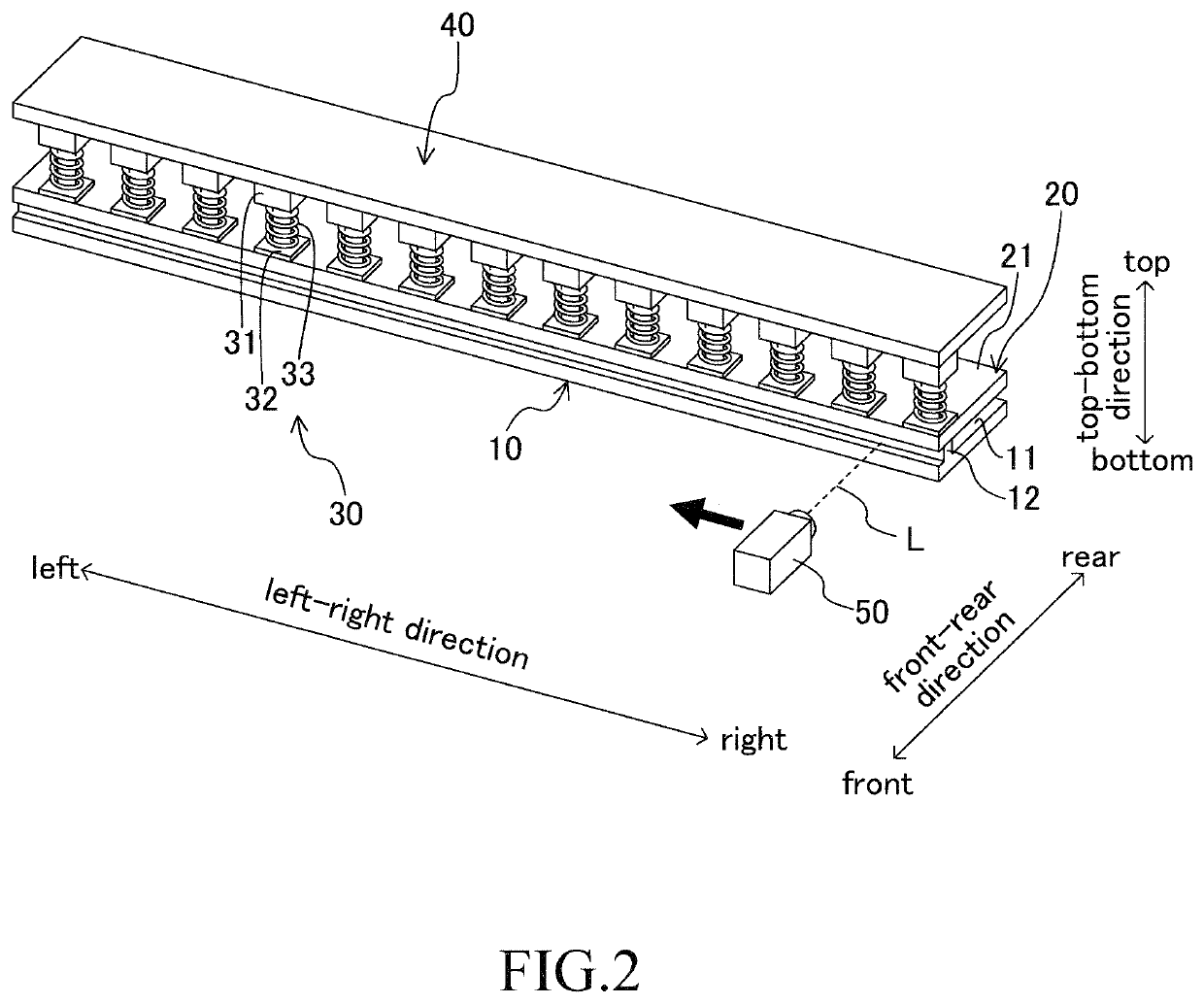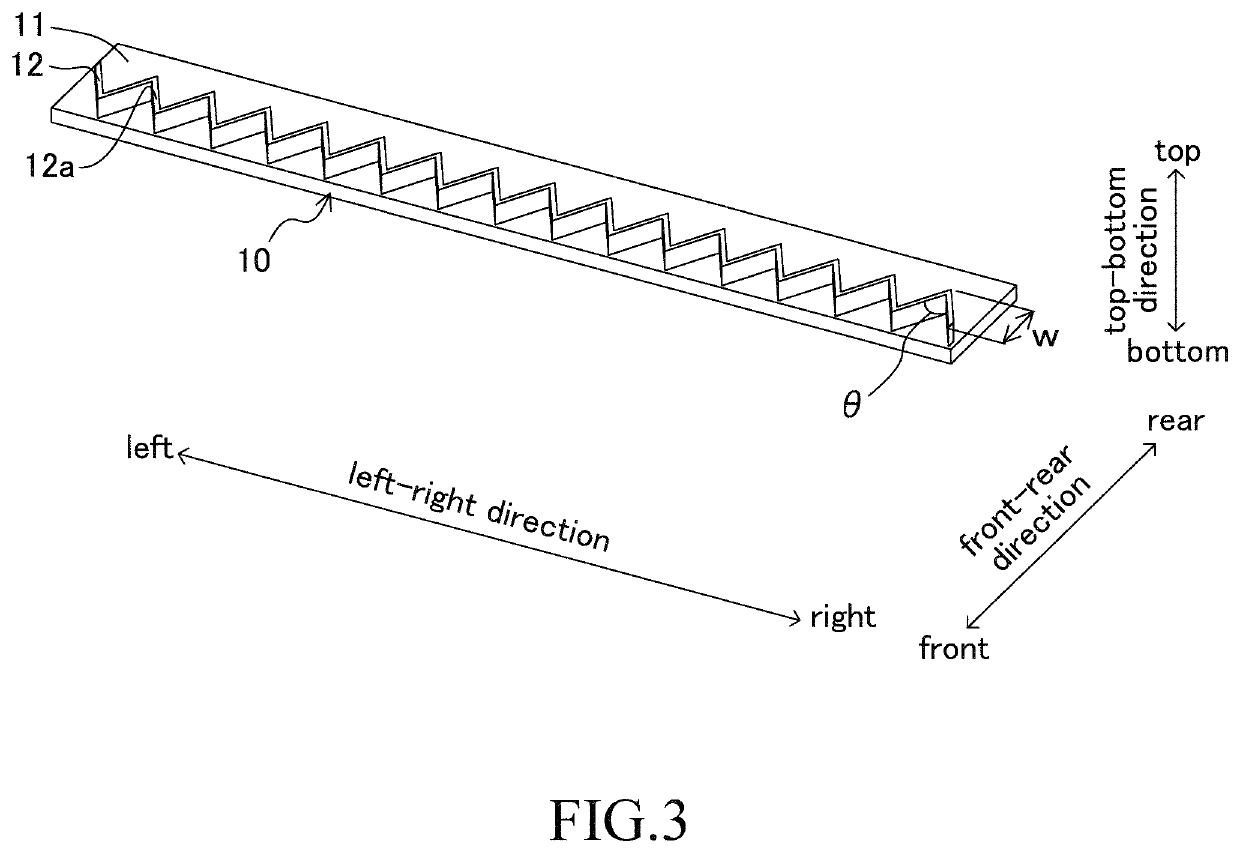Method for welding synthetic resin member
a technology of synthetic resin and welding method, which is applied in the direction of welding apparatus, laser beam welding apparatus, manufacturing tools, etc., can solve the problems of deterioration of the rigidity of a component formed by welding the first member and the second member together, difficulty in increasing the welding strength between the first member and the second member, and difficulty in spreading the melted synthetic resin material within the groove, etc., to achieve the same mechanical strength, high welding strength, and low mechanical strength
- Summary
- Abstract
- Description
- Claims
- Application Information
AI Technical Summary
Benefits of technology
Problems solved by technology
Method used
Image
Examples
Embodiment Construction
[0047]A synthetic resin member welding method according to an embodiment of the present invention will next be described. The present embodiment will be described while referring to an example of a method for forming an approximately plate-shaped component by welding together a first member 10 and a second member 20 each approximately having a plate shape as shown in FIG. 1. First, the structures of the first member 10 and the second member 20 will be described.
[0048]The first member 10 and the second member 20 are made of synthetic resin. Specifically, the first member 10 and the second member 20 are made of a carbon fiber reinforced plastic (CFRP). The first member 10 and the second member 20 have high laser light absorbency. That is, a laser beam hardly penetrates through the first member 10 and the second member 20. Also, the first member 10 and the second member 20 have high thermal conductivity. For example, when the first member 10 and the second member 20 contain carbon fibe...
PUM
| Property | Measurement | Unit |
|---|---|---|
| thermal conductivity | aaaaa | aaaaa |
| length | aaaaa | aaaaa |
| width | aaaaa | aaaaa |
Abstract
Description
Claims
Application Information
 Login to View More
Login to View More - R&D
- Intellectual Property
- Life Sciences
- Materials
- Tech Scout
- Unparalleled Data Quality
- Higher Quality Content
- 60% Fewer Hallucinations
Browse by: Latest US Patents, China's latest patents, Technical Efficacy Thesaurus, Application Domain, Technology Topic, Popular Technical Reports.
© 2025 PatSnap. All rights reserved.Legal|Privacy policy|Modern Slavery Act Transparency Statement|Sitemap|About US| Contact US: help@patsnap.com



